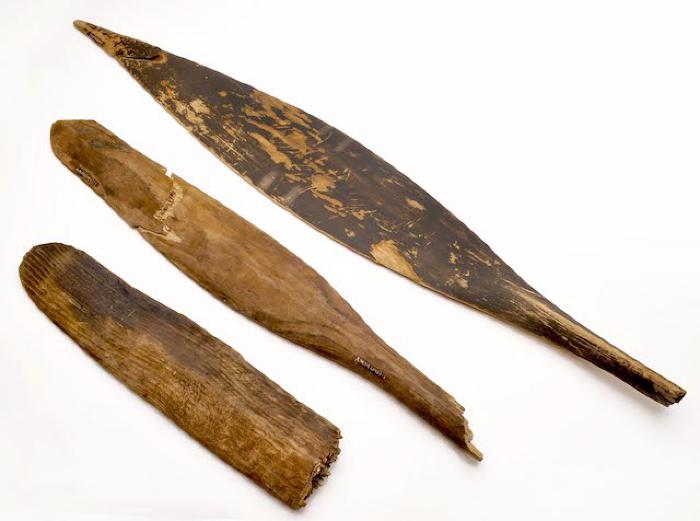Paddle, Oar — Anguaq

Alutiiq hunters propelled their skin-covered kayaks through coastal waters with narrow wooden paddles. Unlike the double-bladed paddles of neighboring peoples, these paddles had a long, spear-shaped, single blade and a short T-shaped handle, much like a modern canoe paddle. Craftsmen carved these paddles from hardwoods collected on local beaches.
Kayakers, in a kneeling position, alternated strokes on either side of their boat. The narrow blade, with its diamond-shaped cross-section, allowed them to make quick stabilizing movements in rough water. Paddles were traditionally stored on the deck of the kayak and a spare was carried for emergencies. In rough water, a group of kayakers might ride out a storm by rafting their boats together with their paddles. In winter, paddles were also used to scrape ice from the deck of the kayak. Men also used their paddles to find sea mammals by placing the handle against their teeth to feel vibrations in the water.
Historic images of paddles, and those preserved in museum collections, illustrate that many were brightly decorated. Hunting scenes and geometric designs embellished the slender wooden implement with black, red, and blue paint. Today, Alutiiq artists are reawakening the art of paddle carving, combining traditional forms with their own designs to create both functional and decorative pieces inspired by the past.
